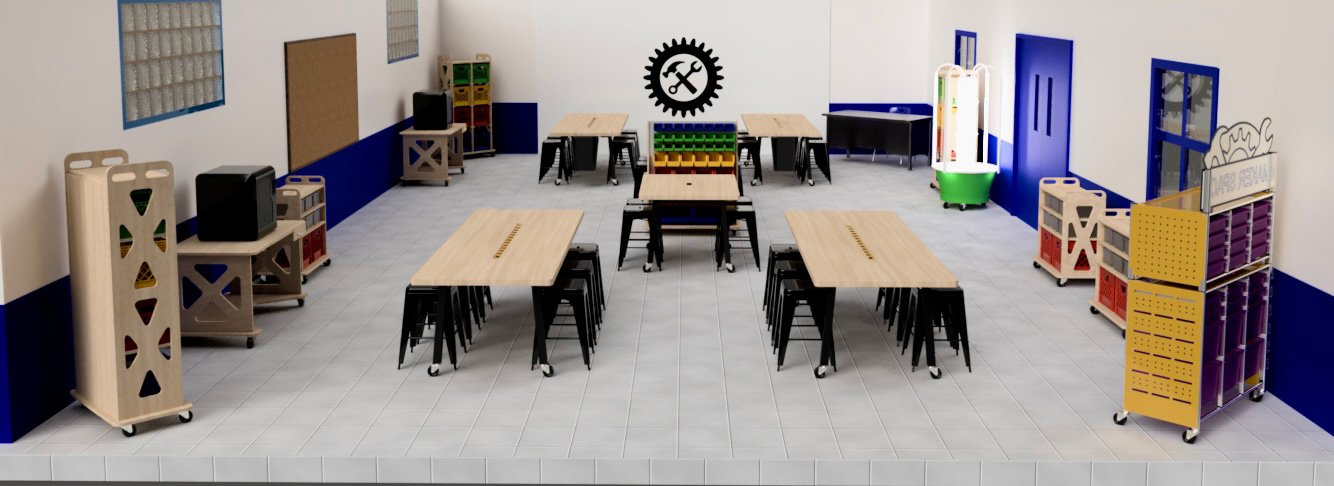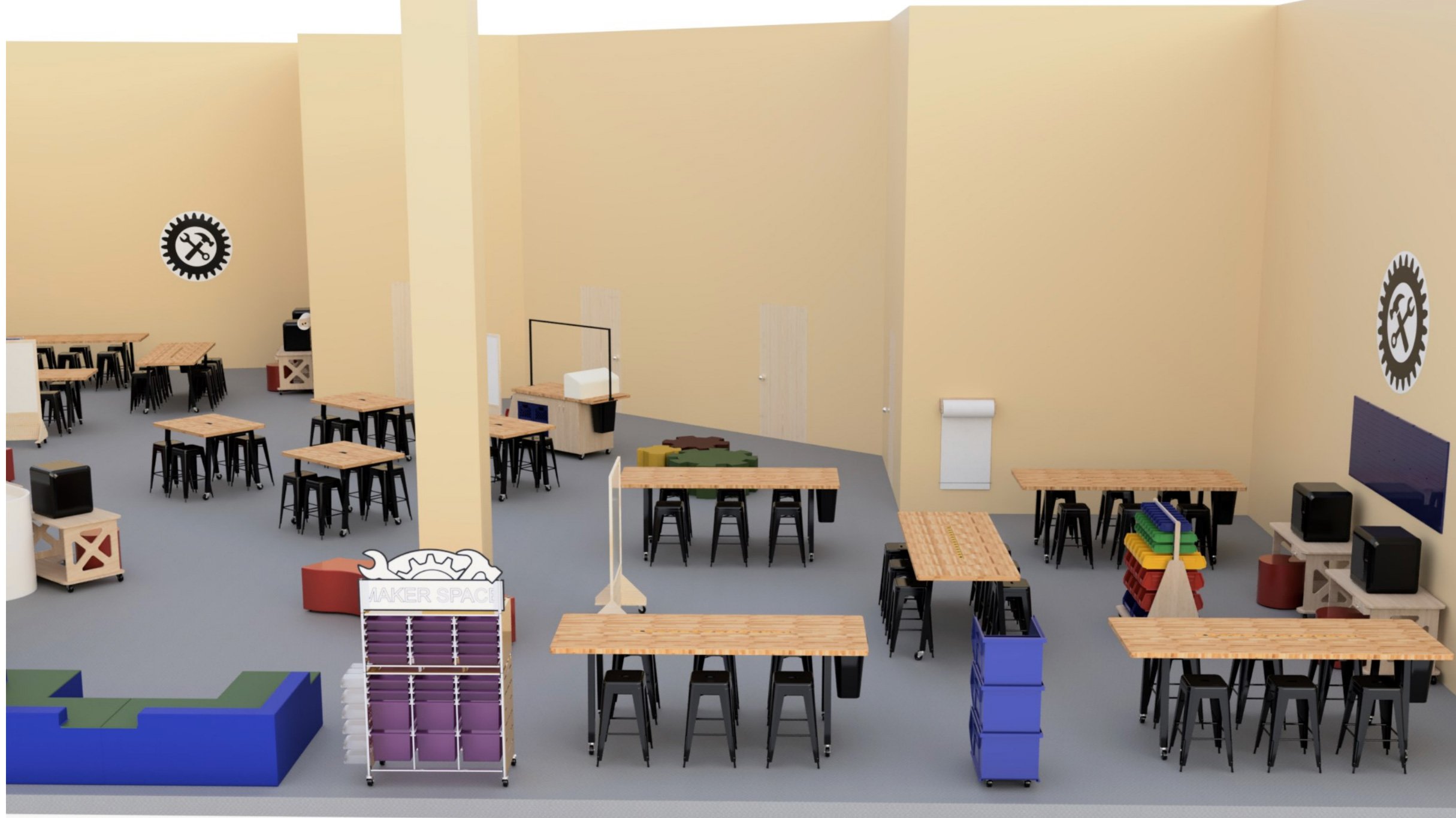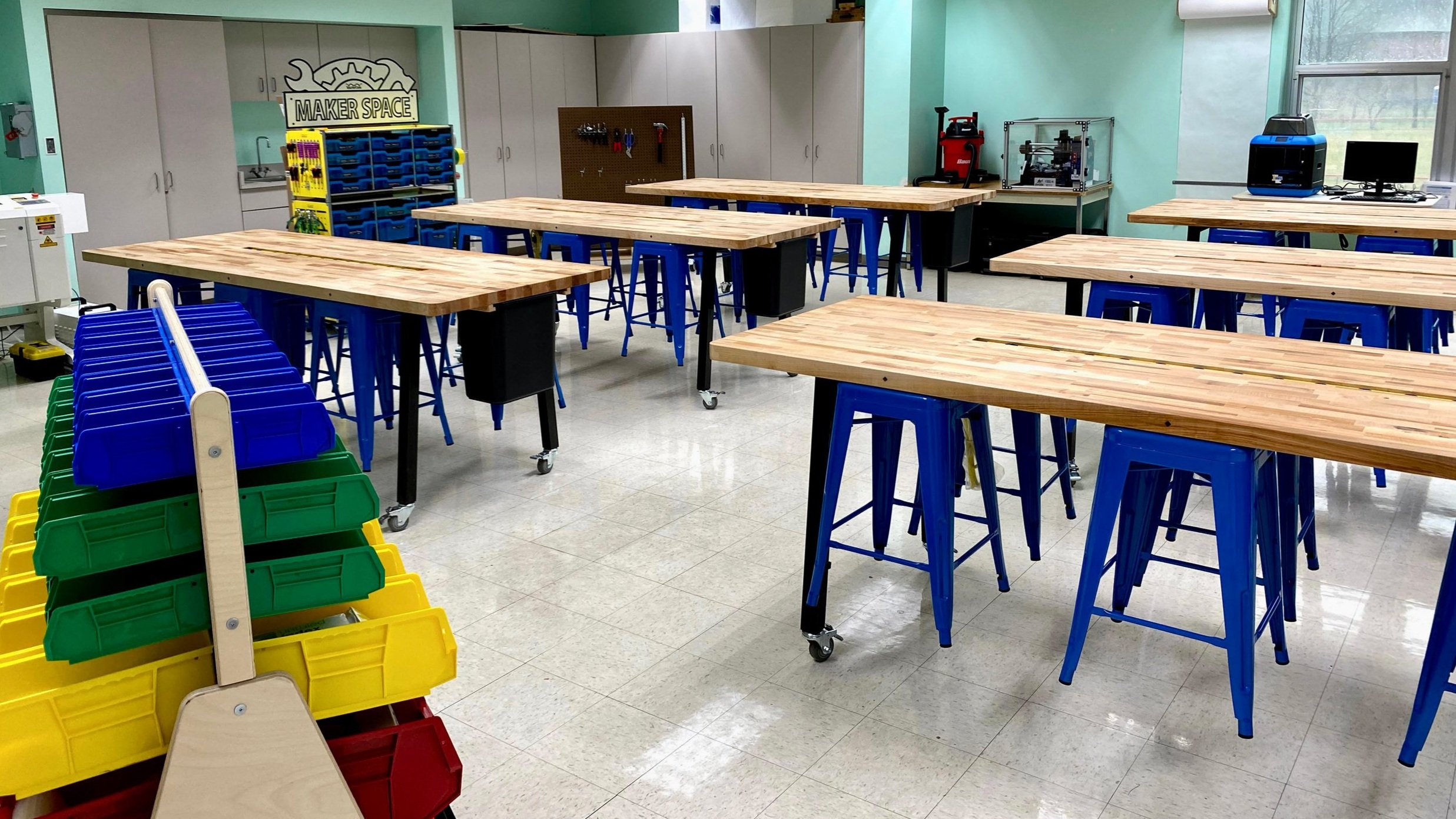How to Start a Makerspace
Makerspaces are vibrant, collaborative spaces and DIY environments where people come together to create, invent, and learn. These innovative spaces typically feature an exciting array of tools and engineering materials, from cutting-edge 3D printers and laser cutters to electronics, craft supplies, and good old-fashioned hand tools. Makerspaces aren't just cool - they're multi-purpose powerhouses. They foster community innovation, enhance educational experiences, and provide a platform for hands-on learning. By encouraging the practical application of STEM concepts, makerspaces bring science, technology, engineering, and math to life in ways textbooks simply can't match.
The beauty of makerspaces lies in their accessibility to learning communities. By offering access to advanced technologies and a collaborative atmosphere, these creative hubs democratize innovation. They empower individuals from all walks of life and learning styles to bring their ideas to fruition, whether it's a student working on a school project or an entrepreneur prototyping their next big invention. School makerspaces level the playing field, putting powerful tools and knowledge in the hands of the curious and creative.
What is a Makerspace?
STEM education has come alive with the maker movement, which encourages hands-on learning and creative problem-solving. Makerspaces give people the power to bring their ideas to life through engineering, design, experimentation, and refinement of prototypes. Makerspaces have opened up a world of invention, allowing students to turn ideas into reality.
Go here to learn more about what a makerspace is and the Maker Movement.
Why Do We Need Makerspaces?
Makerspaces offer personalized opportunities for students to explore, experiment, and bring their ideas to life through hands-on learning. These adaptive workspaces help prepare students for the evolving job market, where STEM skills are increasingly valued across various industries. With STEM qualifications ranging from technical know-how to fostering innovation, educators are being called upon to equip students of all backgrounds with the necessary skillsets and guidance needed in this ever-evolving job market.
The 21st-century labor market presents modern students with the challenge of developing the skills necessary to tackle jobs that have yet to be created. For college and career readiness, they must cultivate technical literacy while simultaneously focusing on employability capabilities.
Go here to learn more about the research behind maker education.
Makerspaces: Empowering Students and Planning Your Space
Makerspaces offer innovative environments that transform how students learn and create. These collaborative spaces combine cutting-edge technology with hands-on learning, fostering creativity and problem-solving skills. By providing access to tools and resources not typically found in traditional classrooms, makerspaces prepare students for the challenges of an increasingly tech-driven world. Let's explore their benefits and how to set one up:
How Makerspaces Supercharge Student Growth
Makerspaces aren't just cool - they're game-changers for students! These innovative spaces help students practice employability skills, take ownership of their work, and gain knowledge through hands-on learning. They transform consumers into creators and provide a safe environment for experimentation and even failure. The impact of makerspaces goes way beyond the classroom, building a growth mindset that'll serve students for life!
Makerspace Flavors: Pick Your Perfect Fit
No one-size-fits-all here! Makerspaces come in all shapes and sizes. The Dedicated Dreamland, like a STEM Lab or Innovation Center, is makerspace paradise. For a more integrated approach, try Media Center Magic by turning your library into a creative hub. Short on space? No problem! Maker Carts on the Move brings innovation right into any classroom.
Crafting Your Makerspace Masterplan
Time to put on your planning hat! Creating a successful makerspace requires careful consideration of your goals, resources, and community needs. A well-designed plan will help ensure your makerspace meets its full potential and continues to evolve with your users' needs. Here's your roadmap to makerspace success:
Dream Big: Define Your Makerspace Vision
What's your makerspace personality? STEM superstar or jack-of-all-trades? Individual workshop or collaboration station? Think about how you want your space to function and who it will serve. Pro tip: Get your community involved in the brainstorming. Their input is gold!
Space Matters: Sizing Up Your Makerspace
Consider how many makers you can accommodate and what kind of equipment you'll need. Don't forget important details like ventilation, power supply, and noise control. Think about access control, too—who gets the keys to the kingdom? Your space should be flexible enough to grow with your maker space's evolving needs.
Tools of the Trade: Equipping Your Makerspace
Start with the essentials:
3D printers and scanners
Laser cutters
Hand tools and power tools
Electronics kits and soldering stations
Computers with design software
Sewing machines and fabric supplies
Safety gear
Remember: Start small, dream big! You can always add more as you grow.
Plan Your Space
Every makerspace is as unique and personalized as the building it’s housed in! Injecting your community’s culture into a makerspace can be an inspiring source of motivation for students and educators alike to create and invent.
Tips to Plan Your Space
Consider who the audience will be. The primary users of the space will determine what type of furniture and equipment is used.
Consider storage. Will students be working on projects over multiple days? If so, open or transparent storage may be considered for student projects and consumable materials.
Ask for input. Create a committee or focus group on getting input from teachers, students, and community members. Teachers are more likely to use a space if their voice is heard.
Consider Curriculum. By designing the right curriculum, we can give students unique opportunities for hands-on learning that builds foundational skills in STEM.
3D Visualizations
As part of our proposal process, our talented team of designers and 3D modelers craft 3D images that show what your finished makerspace could look like - from the type of furniture to the wall colors, everything can be customized to meet your vision. We believe in creating spaces that inspire creativity and innovation, and our 1st Maker Space proposal helps you realize that goal.
2. Secure Funding
You have a vision. You have dreamed the dream of students making and creating rather than just doing what they have always done. You want a makerspace. Most of our clients’ big question is: how do we pay for one?
Raising funds for something new and innovative in a school culture that doesn’t support innovative spending can take time and effort. Navigating grants, donations, school budgets, and yearly changes is challenging. At 1st Maker Space, we want to make it easy to generate income for your makerspace by helping you find the funding to ignite your makerspace.
Tips to Fund Your Space:
Connect with local small and large businesses for sponsorship support. We’ve seen many makerspaces start raising funds through a fiscal sponsorship with local businesses.
Apply for local educational foundation grants on a regular basis. Local educational foundations can fund anything from an entire makerspace to small equipment like a 3D printer or Dash and Dot Robots.
Include your makerspace in your Title IV, Part A Application. 1st Maker Space is recommended for Title IV purchases through Indiana’s Department of Education. Makerspace items that focus on incorporating STEM fall into the bucket “A” of the Title IV, Part A allocation.
Ask for supply donations. When engaged, many community members are happy to donate specific recyclables and consumables (like markers, beads, and rulers).
Interested in Funding?
Are you interested in any of these funding sources? 1st Maker Space would be proud to partner with you to write any of these grants and more to make your vision come to life. We are passionate about supporting innovative and creative learning environments for students. We have the knowledge, experience, and resources to help you find the funding needed to make it happen.
3. Gain Buy-in From Staff & Community Members
How can you get the staff excited about the new makerspace? Invite them to the new makerspace to tinker and play! Consider using a boxed kit like Bristlebots to create a fun tinkering experience that will allow teachers to see how making is fun and can connect to the Indiana Academic Standards. Allow each person to take their gadget or gizmo back to their classroom and proudly display it as evidence that they are a MAKER!
Why Make Staff a Part of the Process?
It’s Fun
We must reinvigorate the teaching experience, and that starts with teachers! Invite them to collaborate on designing an innovative makerspace where students can actively learn in a fun environment.Advocacy
Get your staff involved in the project - empower them to create a makerspace they believe in. Ask for their feedback and ideas, helping you collaborate with one another as advocates of making!Marketing
Unlock the potential of your educators by giving them a platform to share their innovative teaching strategies, cool projects created in the makerspace, and inspiring classroom experiences.
4. Build a Makerspace
Once you have worked with 1st Maker Space to design your ideal space, secure funding, and bring the staff along, leave the rest to us! We provide an all-inclusive service that handles everything from ordering and delivery to unpacking and set-up. This lets you focus on what matters: igniting student innovation through hands-on learning.
5. Implement Making
With the hard work of building a makerspace behind us, it’s time to start implementation and begin exploring all that maker culture has to offer. The beauty of the movement is its ever-changing nature - there are always new skills or techniques to discover! Let’s use this opportunity as an open invitation for growth.
1st Maker Space offers a curriculum for Elementary, Middle, and High School paired with STEM Programs and professional development to give maker managers the training they need to implement maker-centered learning.
The Cost and Financing of Running Your Makerspace
Think makerspaces run on creativity alone? Think again! While brilliant ideas fuel the engine, it's cold, hard cash that keeps the lights on. From 3D printer filament to rent, makerspaces have real-world costs that require savvy financial navigation. But don't worry – with some smart planning, you can keep your innovation hub humming without breaking the bank. Let's dive into the dollars and cents of makerspace magic:
Creating Your Makerspace Budget
First things first - create a detailed budget. Include:
One-time costs (initial equipment purchases)
Ongoing expenses (consumable supply replacements)
Don't forget the less obvious stuff (software licenses, service plans)
For a complete list of tools and materials to get your makerspace up and running, be sure to see our makerspace supplies store page. It's a great resource for budgeting and ensuring you have all the necessary equipment.
Raising Funds for Your Makerspace
Time to get creative with raising funds. Mix and match these options:
Membership dues and fees
Grants from educational institutions or foundations
Corporate sponsorships (think local businesses!)
Crowdfunding campaigns (engage your community!)
Government grants to generate income for community development
In-kind donations (who doesn't love free equipment?)
Pro tip: Diversify your funding sources for stability. Consider ways to generate income through workshops, classes, or equipment rentals for extra income to start raising funds. And remember, strong community partnerships and fiscal sponsorships can lead to unexpected opportunities!
Estimating Makerspace Costs: From Startup to Ongoing Expenses
Here's the deal - costs can vary wildly. Raising funds for small community spaces might start lean, while a larger facility could require some serious cash. Here's what to budget for:
Rent or mortgage payments
Utilities (electricity, water, internet)
Equipment purchases and maintenance
Supplies and materials
Meeting with a tax consultant
Insurance costs
Staff salaries (if you're going big!)
Marketing and promotional expenses
Itching to fire up those 3D printers and unleash a storm of creativity? Our team is here to help! We can guide you through equipment selection, membership dues, space planning, and creating a rock-solid financial strategy. Let's make it happen - reach out today and let's get started on your makerspace journey!
Continuing to Learn:
Join us for four intensive training days at our summer Maker Manager Program. We’ll guide you through developing, assessing, and sustaining a makerspace, STEM Lab, or innovation space. We cover everything from the basics of the maker movement to practical skills like managing your space and safety practices.
Attend maker-related professional development. 1st Maker Space hosts at least one monthly professional development event focused on a different tool, curriculum idea, or strategy.
Consider e-coaching. All new maker managers would benefit from our Professional Development Specialists.
Join our email list. Our team sends weekly updates on the maker movement and equipment pricing specials.
Follow us on social media @1stmakerspace. We have curated an online community of makers inviting you to join to share ideas, give feedback, and find inspiration.
Ready to take your STEM program to the next level?
Our friendly and knowledgeable sales team is eager and ready to help you get started with a makerspace. Let’s discuss how we can support your organization in reaching its goals! From providing equipment and supplies to helping you develop a comprehensive makerspace strategy, we have the experience and expertise necessary to make it happen. We’re available to answer any questions you may have, provide guidance on how to equip your space, and more. Contact us today and let’s get started!




















